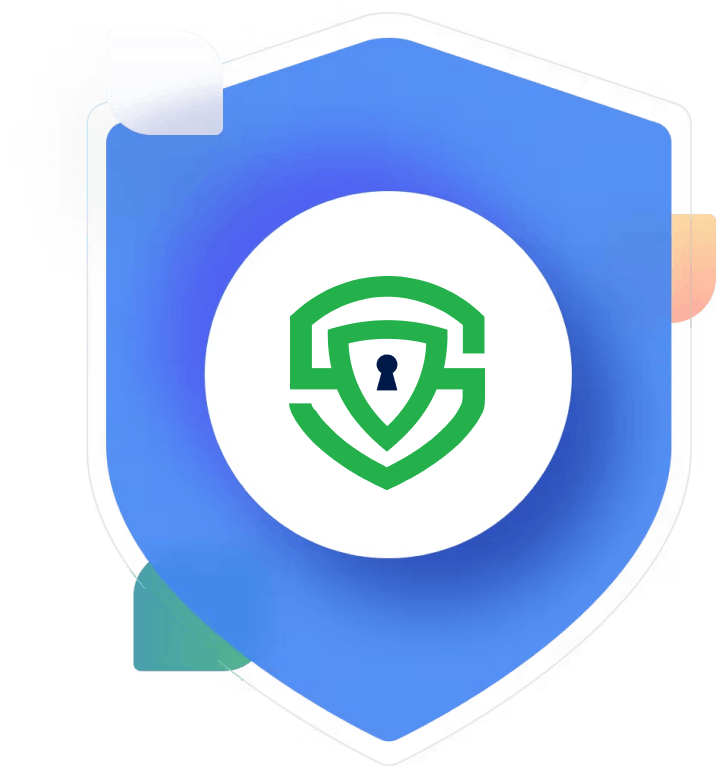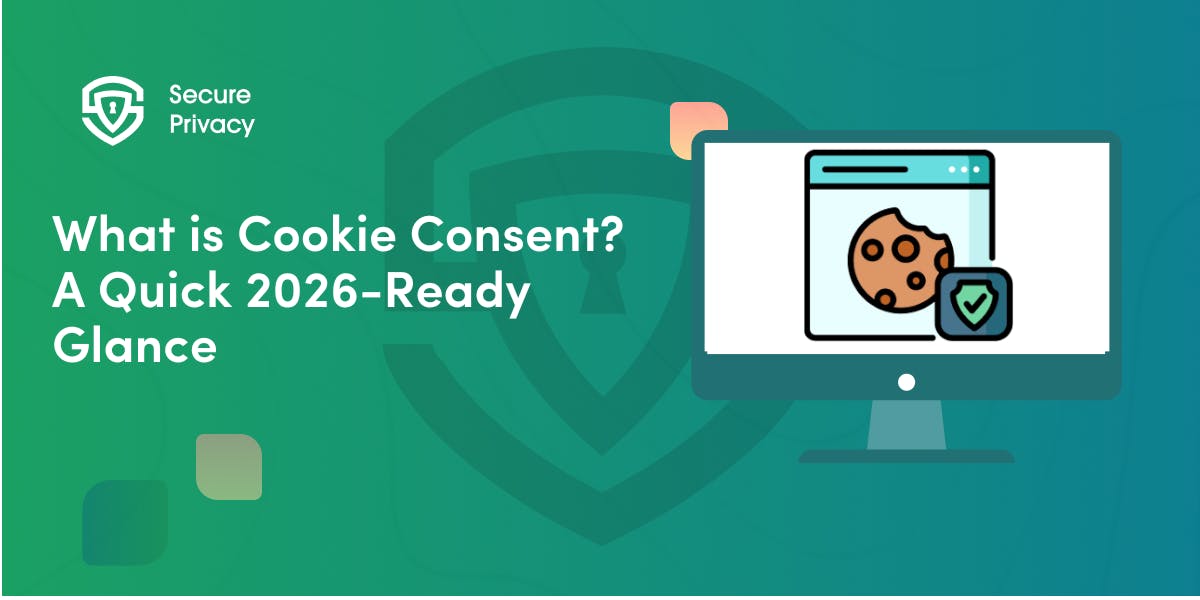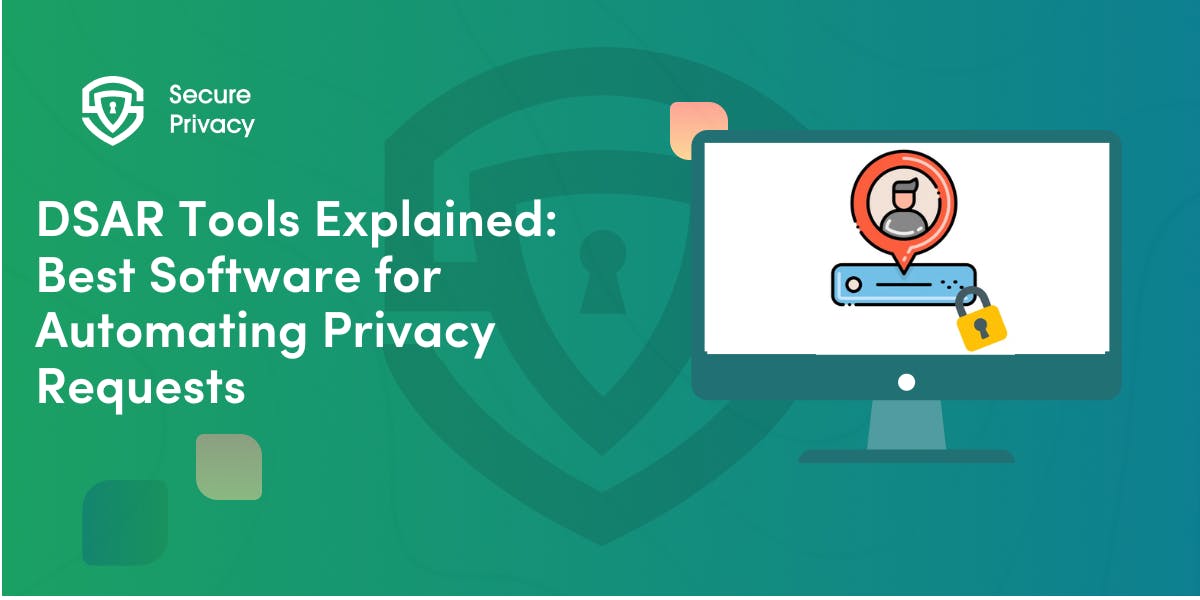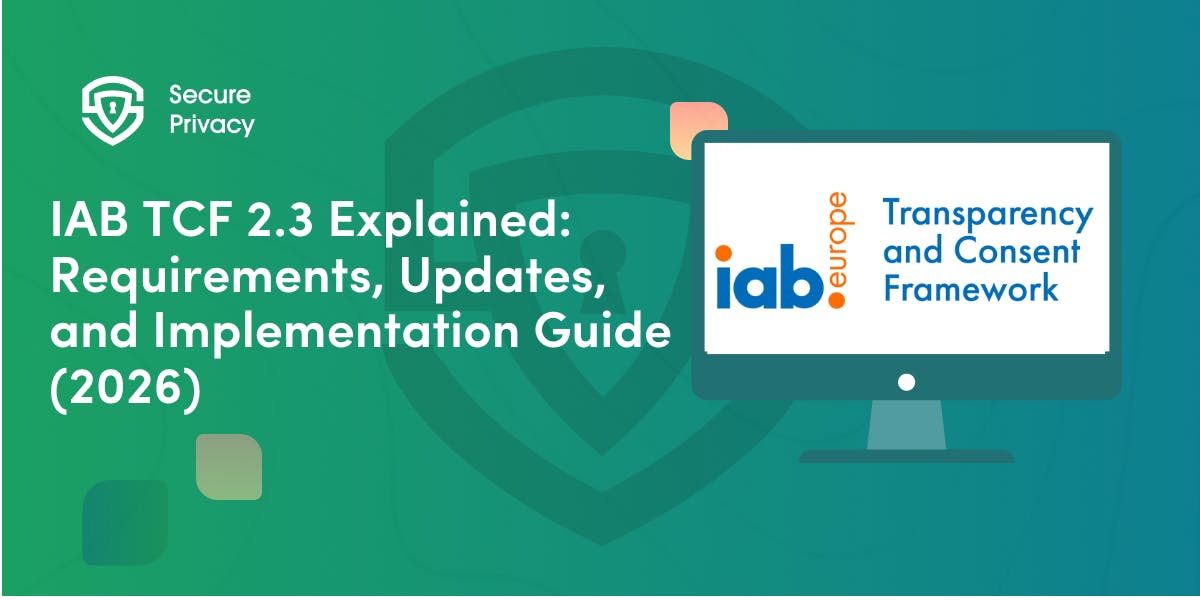Process Register Module: Automating GDPR Article 30 Compliance
Your company processes personal information using many different systems. You might be tracking GDPR compliance with old spreadsheets and scattered documents. Managing your Record of Processing Activities by hand creates serious problems. These gaps can lead to €10 million fines and waste your staff's time.
GDPR Article 30 record keeping rules require you to document all your data operations systematically. This changes regulatory adherence from last-minute paperwork into organized accountability systems. Modern documentation software handles this important job automatically. It cuts your administrative work by 70% and keeps you in continuous regulatory adherence.
This complete guide shows you how documentation modules close gaps, speed up audit preparation, and give you clear insight into your company's data operations that regulators require.

Prioritizing user privacy is essential. Secure Privacy's free Privacy by Design Checklist helps you integrate privacy considerations into your development and data management processes.
What is a Documentation Register?
A Documentation Register is the complete record system that GDPR Article 30 requires. It keeps detailed records of all personal data activities in your company. This organized approach turns scattered documents into one central system that shows you follow regulations and run your business openly.
GDPR documentation requirements tell you what specific information you need for each activity. This includes why you collect data, what types of data you have, your legal reason for having it, how long you keep it, who you share it with, if you send it to other countries, and how you keep it safe. Documentation Registers put all this information into organized formats that help you manage your business and follow regulations.
Modern systems do more than just check boxes. They give you strategic oversight that helps you handle data better while reducing risks. Companies that keep complete registers show they are mature in privacy matters. This builds trust with stakeholders and gives you competitive advantages through organized data management.
Record keeping tools work with other management platforms to create unified management systems. This complete approach removes information barriers and gives the right people access to metrics and accountability documents across complex company structures.
Essential Parts of Documentation
Processing Purpose and Legal Basis
Each documented activity must clearly explain why you collect and handle personal data. This creates clear connections between your business goals and how you handle data. Legal basis documentation proves your data handling is legal under GDPR Article 6. It also helps you manage data subject rights and defend against regulatory issues.
Purpose descriptions help people understand why you handle data the way you do. They also support Data Protection Impact Assessments and risk evaluation activities. Clear purpose documentation prevents you from expanding beyond your original scope. It ensures you apply the same protections consistently across your business operations.
Data Categories and Subject Classifications
Complete data categorization identifies the specific types of personal information you handle in each activity. This includes contact details, behavioral data, financial information, and special category data that needs extra protection. Subject classification defines who is affected, including employees, customers, suppliers, and prospects.
Detailed categorization supports automatic risk assessment. It also helps you respond precisely to data subject rights requests and regulatory reporting. Accurate classification ensures you apply the right security measures and prevents you from accidentally handling restricted data categories.
Retention Periods and Disposal Procedures
Organized retention documentation establishes how you manage data throughout its lifecycle. It supports automatic disposal workflows and regulatory obligations. Retention schedules align with business requirements, legal obligations, and regulatory guidance. They also reduce risks by minimizing the data you keep.
Disposal procedure documentation ensures you destroy data securely while keeping audit trails for regulatory accountability. Automatic retention management prevents you from storing data forever. It also supports business continuity and legal discovery requirements.
Technical and Organizational Measures
Security measure documentation describes the safeguards you use to protect personal data throughout its lifecycle. This includes access controls, encryption, backup procedures, and incident response capabilities. Organizational measures address staff training, policy implementation, and management structures.
Complete security documentation supports regulatory defense and helps you continuously improve your protection measures. Integration with security management systems keeps documentation current and prevents gaps during system updates or configuration changes.
Key Features of the Documentation Module
Detailed Activity Documentation Capabilities
Advanced modules provide organized data entry forms that capture all required GDPR Article 30 elements. They ensure regulatory completeness through smart validation systems. Template libraries speed up documentation while keeping accuracy across different business operations and industry requirements.
Helpful guidance systems support accurate completion of complex regulatory requirements. They work with organizational differences and specialized activities. Version control keeps historical documentation for audit purposes. It also tracks changes and approval workflows.
Smart Categorization and Filtering Systems
Complete categorization organizes activities by business function, regulatory framework, risk level, data sensitivity, and company department. Advanced filtering helps you focus on specific areas while keeping complete company oversight and strategic visibility.
Search functionality helps you quickly find specific activities. Bulk editing capabilities help you efficiently update multiple related operations. Export filtering creates targeted documentation for specific audit requirements or regulatory submissions.
Responsibility Assignment and Accountability Tracking
Role-based assignment ensures the right person owns each activity. It works with complex company structures and multi-departmental data operations. Automatic notification systems alert assigned personnel to review schedules, obligations, and documentation updates.
Workflow management tracks documentation completion status. Escalation systems prevent gaps through organized oversight. Integration with company directory systems keeps current assignment information despite personnel changes or structural modifications.
Step-by-Step Implementation Guide
Navigate to Documentation Interface
Teams access functionality through easy-to-use navigation systems that provide immediate visibility into all documented activities. Main menu integration gives direct access to complete libraries. Dashboard integration shows real-time status indicators.
Search and filtering capabilities help you quickly find specific activities or categories while keeping complete company oversight. User-friendly interfaces work for both technical and non-technical staff without compromising functionality or documentation requirements.
Create New Activities with Required Information
Complete creation workflows guide users through required GDPR Article 30 documentation requirements. This includes controller identification, purposes, data categories, recipient information, international transfers, retention periods, and security measures. Smart form validation prevents incomplete submissions while ensuring regulatory adherence.
Template libraries provide pre-configured activity descriptions for common business operations. This includes human resources, marketing, customer service, financial management, and vendor relations. Customizable templates work with industry-specific requirements while keeping regulatory standards.
Integrate Risk Assessments and Security Measures
Risk assessment integration helps you systematically evaluate each activity against company risk criteria and regulatory requirements. Automatic risk scoring algorithms analyze data sensitivity, complexity, and implemented safeguards. They also generate prioritized improvement recommendations.
Security measure documentation captures implemented technical and organizational protections. This supports demonstration and audit preparation. Integration with security management systems ensures documentation accuracy and prevents gaps during system updates or configuration changes.
Common Use Cases and Applications
Building Complete GDPR Article 30 Records
Companies use modules to systematically document all personal data activities in full adherence with Article 30 requirements. Automatic templates ensure regulatory completeness while continuous monitoring keeps documentation current as business operations change and expand.
Record keeping removes manual documentation gaps while providing real-time status visibility across complex company structures. Integration with business systems ensures crcoverage of all activities without relying on potentially incomplete manual surveys or questionnaires.
Showing Accountability During Regulatory Audits
Complete registers provide audit-ready documentation that shows complete program maturity and systematic regulatory adherence. Automatic report generation produces professional summaries while detailed documentation supports thorough regulatory review and investigation requirements.
GDPR accountability principle frameworks show systematic risk management to regulatory authorities while building stakeholder confidence in company data protection capabilities. Complete documentation provides competitive advantages through demonstrated excellence and regulatory commitment.
Finding and Reducing Risks
Systematic documentation helps you completely identify risks across all company data activities. Risk assessment integration evaluates each activity against established criteria while prioritizing attention on highest-risk operations that need immediate reduction strategies.
Trend analysis identifies emerging risk patterns and helps you develop proactive strategies before issues become violations or regulatory scrutiny. Management software capabilities change reactive management into strategic program optimization and continuous improvement.
Best Practices
Keeping Documentation Current and Accurate
Set up organized review schedules that prompt regular documentation updates. This ensures continued accuracy as business operations change and new activities start. Automatic monitoring alerts teams to potential gaps while integration with change management systems keeps documentation current.
Regular training ensures team members understand documentation requirements while keeping consistency across different company units and activities. Continuous improvement makes documentation workflows better while reducing administrative work and improving effectiveness.
Change GDPR Requirements with Documentation Excellence
The Documentation module delivers complete data protection register capabilities that change manual GDPR Article 30 adherence into automatic, systematic documentation management. Companies achieve complete visibility into all data activities while ensuring continuous regulatory adherence and strategic program optimization.
Essential Features:
- ✅ Complete GDPR Article 30 documentation with smart validation
- ✅ Automatic risk assessment integration with predictive analytics
- ✅ Role-based assignment systems with workflow management
- ✅ Advanced categorization and filtering for strategic oversight
- ✅ Audit-ready reporting with professional documentation generation
- ✅ Integration with other management platforms
Teams report 70% reduction in documentation time while achieving complete audit readiness within 30 days of implementation. Change scattered documentation into systematic accountability frameworks that show maturity and regulatory excellence.
Explore our demonstration to discover how automatic GDPR Article 30 adherence changes management from reactive documentation into proactive strategic program management and competitive advantage.
Companies implementing complete management show superior governance while achieving measurable improvements in efficiency, risk reduction, and regulatory relationship management. Schedule your personalized demo today to explore how systematic documentation changes company capabilities.
Ready to automate your GDPR Article 30 requirements? Contact our management experts immediately to discover how modules remove manual documentation gaps while ensuring complete regulatory adherence and strategic program excellence across your company.
Get Started For Free with the
#1 Cookie Consent Platform.
No credit card required

What is Cookie Consent? A Quick 2026-Ready Glance
Your website loads. Cookies track users. But without proper cookie consent, you're violating GDPR — risking fines up to €20 million or 4% of global revenue. Cookie consent is the legally required mechanism by which websites obtain explicit user approval before deploying non-essential tracking technologies. This requirement stems from GDPR Article 4(11) and the ePrivacy Directive, mandating that consent must be freely given, specific, informed, and unambiguous.
- Legal & News

DSAR Tools Explained: Best Software for Automating Privacy Requests
You're drowning in data subject access requests. Manual searches through dozens of systems miss regulatory deadlines and expose organizations to fines starting at $2,500 per violation. The solution? DSAR tools — purpose-built software that automates the entire process of responding to data subject access requests, from intake to delivery.
- Legal & News

IAB TCF 2.3 Explained: Requirements, Updates, and Implementation Guide (2026)
Your ad revenue dropped 40% overnight. Google stopped bidding on your inventory. Your DSP partners flagged your traffic as non-compliant. The culprit? An outdated TCF 2.2 consent string after the February 2026 enforcement deadline.
- Legal & News
- Cookie Consent
